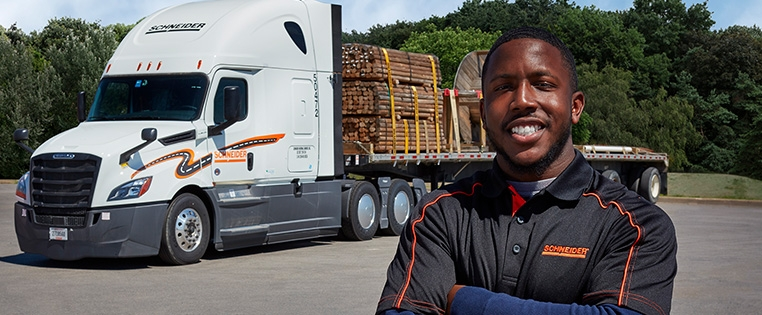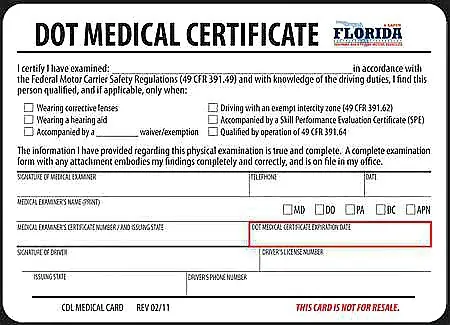If you are a truck driver with a CDL certification, you may be one of those who seek to restart or further commercial driving careers. With the various available CDL truck driver jobs now, this is the right time to look for the next opportunity that best suits your needs. From local, regional, to cross-country routes, there are many well-paying jobs in demand of professional drivers. In this guide, we will help you discover some of the best CDL truck driver job openings, share tips that will enhance your application, and point you in the direction of hiring companies ready to put you on the road.
How to become a CDL truck driver?

To get a view of how to become a professional CDL truck driver, here are general steps one may want to consider:
Meet all the requirements
To be a CDL truck driver, there are certain qualifications that one needs to fulfill; these concern federal and state requirements. Drivers must be at least 21 years old to drive interstate and 18 to drive intrastate. A person who wishes to become a commercial driver is expected to have a safe driving record since this reflects on his good driving habits. Drivers need to undergo a DOT physical test to prove that they are capable of health standards for being a professional driver. Other safety requirements include background checks and drug screenings. From here, a very rewarding career in commercial driving can be achieved.
Enter a truck training program
The first step toward becoming a CDL truck driver is to enroll in a truck driving school or training program. Most programs will cover basic areas such as safe driving methods, rules of the road, and how to conduct a vehicle inspection efficiently. Many programs also provide actual training in maneuvering and handling large vehicles in preparation for your experiencing real-life on-the-road driving situations.
Obtain a valid CDL
After you complete the training, you will need to obtain a CDL. Usually, there are three classes of CDLs: Class A, Class B, and Class C. Each determines what kind of driving a driver can do. Normally, for big freight trucks, drivers would need a Class A CDL. Most often, this involves passing a written, on-road driving test and a skills test, or a driving test.
Get a comprehensive guide on how to get a CDL by accessing our post here.
Apply for a job
With this cleared, you may begin sending applications for driving jobs on CDL trucks at various places. Most of the companies are interested in drivers with good training experience and an appropriate classification of CDL to operate whatever vehicles they have. Entry-level jobs might be a stepping stone toward more specialized or well-paying ones within the trucking industry.
Top CDL truck driving jobs available

Here are some of the best-paying CDL truck driving jobs you can consider:
Long-haul truck driver
Long-haul truck drivers travel from one place to another, quite often crossing into states or even national borders. This requires a great deal of energy, close attention to detail, as well as accepting responsibility over long hours for driving safely. Here is a general overview of some responsibilities and requirements for a position such as this:
Responsibilities
- Travel long distances and deliver goods safely, timely.
- Routine vehicle checks and making sure the load is secure.
- Keeping correct, accurate driving logs, following all HOS regulations.
- Coordinate with dispatchers and customers on delivery times/dates.
- Understand and comply with any appropriate road safety regulations and company policies.
Requirements
- Valid CDL – Class A in the case of over-the-road routes.
- Must be willing to drive for up to several days/weeks at a time.
- Clean driving record and the ability to pass a DOT physical and drug screening.
- Excellent time management and navigation.
- Able to endure long drives on the road.
Over-the-road truck driver
OTR truck driver transports freight over a long distance, which involves traveling through numerous states or regions. This type of work requires flexibility in the kind of duties one has to handle, taking the job for longer periods, and being committed to safely and timely delivering the goods to the required destinations.
Responsibilities
- Drives goods across the country, often on routes requiring continuous travel.
- Conducts pre- and post-road trip vehicle inspections to ensure safe on-road operation.
- Secure and account for cargo to prevent shifting or damage during transport.
- Maintain complete records of hours, mileage, and delivery status as required by the DOT.
- Clearly communicate with dispatchers regarding the status of deliveries and estimated time of arrival.
Requirements
- Valid Class A CDL to drive interstate.
- Must be willing to be away from home for up to two to three weeks at a time and cover up to 6,000 miles per trip.
- Must have a clean driving record with an excellent safety history.
- DOT physical examination and drug testing must be passed.
- Excellent navigation skills with proven time management and problem-solving skills.
Regional truck driver
A regional truck driver operates within a specific geographic area, often covering routes throughout two or three neighboring states. The regional position often offers more predictable home times, which appeals to truckers looking for work-life balance.
Responsibilities
- Transport goods within the region for trips usually covered within one to three days.
- Perform basic vehicle inspections and ensure cargo is loaded and secured properly.
- Record and keep proper driving logs; be aware and compliant with Hours of Service regulations.
- Meet with dispatchers to confirm loads, locations, and times.
- Comply with company and DOT safety policies and procedures to ensure safe and efficient cargo delivery.
Requirements
- Valid CDL, Class A or B depending on class of vehicle to be driven (Class A drivers earn more money as they cover wider ranges of hauls).
- Ability to manage regional driving routes, flexible scheduling which can include possible nights overnights.
- No tickets or accidents on driving record, must be able to pass physical with the DOT and a drug test and enrollment.
- Strong navigation/time management to enable deliveries on time.
- Physical fitness for driving and handling regional delivery requirements.
Local delivery driver
A local delivery driver moves goods within a single city or local area, often making multiple stops during the day. This job has the benefit of home time every day, so it is perfect for drivers who want a regular schedule.
Responsibilities
- Deliver goods to various local destinations, often completing multiple deliveries per day.
- Conduct pre- and post-trip vehicle inspections for safety and compliance.
- Loading and offloading cargo and safely securing cargo to deliver to destination.
- Work also encompasses maintaining accurate delivery records, routes, and customer contacts.
- Ensuring the driver strictly complies with all traffic laws as well as company safety procedures while driving.
Requirements
- Valid CDL- Class B/Class C depending on size of the vehicle.
- In-depth knowledge of local routes and patterns of traffic movement.
- Clean driving record; ability to pass any and all background checks and screening.
- Excellent customer service skills, including communication when dealing with clients.
- Possess a physical capability to repeatedly get on and off and handle cargo throughout the day.
Hazmat driver
A hazmat driver specializes in transporting hazardous materials, including chemicals, gases, or flammable liquids. Handling requires much care and follows strict regulations on safety. Special training and additional endorsements demand higher pay.
Responsibilities
- Transport hazardous cargo to various locations safely and in accordance with all safety and regulatory requirements.
- Inspect the vehicle and equipment at the beginning of each trip in detail to identify if the vehicle is safe to operate under hazardous materials regulations.
- Safely load and unload hazardous cargo and materials, and secure cargo in a reasonable and safe manner which includes complying with federal and company requirements
- Cargo and route information log maintenance for DOT requirements.
- Communicate various information to dispatchers and emergency personnel specifically en route or after incidents or in route changes.
Requirements
- Valid Class A or Class B Commercial Driver’s License with Hazmat (H) endorsement, Tanker (N) endorsement for liquids often required.
- Clean driving record/demonstrated emphasis on safety.
- DOT physical exam and drug testing passable background check.
- Complete specialized training in handling and transportation of hazardous materials.
- Strong organizational and problem-solving skills to handle demands associated with moving high-risk cargo.
Flatbed truck driver
The work of a flatbed truck driver involves the transportation of oversized or irregularly shaped cargo, requiring open, flat trailers. Loading and unloading duties are often included with this position, so it requires skill in load securement and is best for drivers who are detail-oriented and physically capable. Major responsibilities and requirements include but are not limited to the following:
Responsibilities
- Transport oversized or uniquely shaped cargo on flatbed trailers, usually over a long distance.
- Secure the load with appropriate tarps, straps, or chains to safeguard the cargo and prevent shifting en route.
- Conduct daily vehicle inspections and load checks during the course of the transportation.
- Record driving logs accurately and adhere to requirements for HOS and DOT.
- Utilize communication with dispatch and customers regarding delivery times and cargo needs.
Requirements
- Valid Class A CDL; additional endorsements may be required depending on the cargo transported.
- Previous experience with load securement and understanding of DOT load securement regulations.
- Physical stamina to perform the functions of loading, securing, and unloading at the job site.
- Clean driving record with a satisfactory DOT physical and drug screen.
- Excellent time management skills as the delivery schedules are very tight.
For more CDL truck driver recruitment information, follow: https://www.indeed.com/jobs?q=cdl+truck+driver&l=United+States
What does a CDL Truck Driver do?

Operating a Commercial Driver’s License, or CDL, a truck driver’s role entails safety and efficiency in the transportation of goods and materials locally, regionally, or long-distance. Supply chains depend on the timely manner in which goods are moved out to businesses, distribution centers, and customers. The following outlines the main tasks that a CDL truck driver frequently does:
Safely transport goods
Truck drivers with a CDL license drive big trucks, usually tractor-trailers, transporting goods. This can be a very long drive covering many states or territories. Drivers should follow road safety practices and deliver cargo without causing any damage to them during travel. After all, safety would be of utmost concern, as truck drivers are supposed to be responsible not only for their own well-being but also for that of other fellow on-road travelers.
Pre-trip vehicle inspection
CDL truck drivers do standard vehicle inspections before and after taking a trip. This includes a brake check, light check, tire check, and other minor things that would classify the vehicle as in decent operating condition. The purpose of an inspection is to prevent accidents and breakdowns from occurring. This is also the law – DOT’s requirements.
Cargo loading and unloading
With the nature of the work involved, other CDL truck drivers are even tasked with loading and unloading cargo. This could include loading for travel, preventing shifting on the highway, particularly with flatbed trucking. This is an excellent way of ensuring that the driver is safe, the rest of the vehicles on the road are safe, and the cargo being moved is not damaged in any way.
Proper log-keeping and records
Truck drivers with a CDL license also have to maintain accurate records of the time they spend driving, resting, delivering goods, and performing maintenance tasks. The FMCSA institutes rigorous standards on hours of service (HOS) or the amount of hours beyond which they need to stop and rest. Such records indicate the non-occurrence of any breach and overworking of the driver.
Routing and scheduling
This holds especially true for long-haulers, for whom effective route planning becomes a must. Most depend on their GPS and routing software to find the shortest and safest route that will similarly help them avoid construction sites, bad weather, or highly trafficked parts of the country. This practice enables them to make delivery schedules while not exceeding mandated hours of driving.
Adherence to DOT regulations
CDL truck drivers are required to follow all Department of Transportation federal and state regulations, which outline standards relating to vehicle maintenance, driver conduct, and hours of service. The objective of such provisions is to ensure road safety by attempting to eliminate those accidents that are associated with a driver’s fatigue. A driver failing to comply with the regulations can face on-road fines or penalties imposed on them or suspension/loss of driving privileges.
Communicate with dispatchers and customers
Other primary responsibilities involve staying in touch with dispatchers. Dispatchers may relay information to drivers on any changes in routes, weather conditions, and even last-minute changes on the schedules of delivery. Good communication ensures the customers are also informed about arrival times or any probable delays.
Providing customer service
Many transportation companies depend on their CDL truck drivers as representatives of the company when customers or clients are involved. Professionalism, courtesy, and clarity in communications will go a long way in building positive relationships and improving customer relations.
Follow company policies and procedures
CDL truck drivers will have to fully comply with all of the safety, efficiency, and legal standard policies and procedures provided by their company. This would include things such as pre- and post-operation vehicle inspections, proper reporting of work hours, and communications with dispatchers. Adherence to protocols set by the company minimizes the risks on the road, secures the assets of the company, and keeps the virtue of professionalism. In such cases, compliance with the described procedures shall help the trucking industry maintain successful and safe operations.
Handling emergencies and unexpected situations
From a flat tire to an accident in traffic, or even bad weather, situations always come up that a CDL truck driver needs to conquer on the road. This will often include using problem-solving skills to locate another route, to wait out hazardous conditions, or to set up repairs. Quick thinking, along with a calm approach, helps the CDL driver to deal with these issues in a safe and effective manner.
The work of a CDL truck driver encompasses a strong commitment to safety, paying attention to details, and flexibility. This is a really challenging and rewarding position that plays a crucial role in supporting businesses and communities by ensuring goods are delivered where they’re most needed.
FAQs
1. What is the average salary of a CDL truck driver in the US?
The average remunerations for a US-based CDL truck driver are from $45,000 to $70,000 annually; however, this is a little different based on location and experience. More specialized roles could include delivering hazardous materials or performing long hauls and may offer even higher salaries. For more information about CDL driver’s salary, click here.
2. What state pays CDL drivers the most?
Most often, high-ranking states in the wages of CDL drivers include Wisconsin, Alaska, and Massachusetts due to high demand for freight transport and challenges unique to their region.
3. What is the highest paid for a CDL truck driver?
The highest-paying CDL truck driver job is often that of a Flatbed owner operator. It requires more skill to drive oversized or irregularly shaped loads and also much more careful load securement, which lets them charge higher rates per mile. Many flatbed owner-operators can clear more than $300,000 annually.
4. How much does a CDL truck driver make an hour?
The pay of a CDL driver on an hourly basis usually ranges from $30 to $40 per hour. It also depends on betters based on experience, type of haul, and location.
5. What is a class A CDL truck driver?
A Class A CDL permits drivers to drive large vehicles whose GVWR is 26,001 pounds or more with trailers over 10,000 pounds. Truck drivers who have an interest in driving tractor-trailers, tankers, and other cargo-carrying heavy freight vehicles apply for a Class A license.
Final thoughts
Your next CDL truck driver job is only a few steps away! In the era when the demand for competent CDL drivers is completely high, you will be well-placed to find an ideal job that meets your career goals, style of life, and financial needs. Now get ready to kick-start your search; apply for your fit jobs and take off to drive toward success. The next adventure on the open road begins now; apply today and take the wheel of your future!



